Inside Red Bull Studios with Vacationer and Chris Tabron
The band Vacationer released an album near the end of June that sounds bigger, glossier and more alive than their past efforts.
Their first record, 2012’s Gone, had been competently produced in a repurposed loft space in the Bedford Stuyvesant section of Brooklyn, drawing heavily on shoegaze and tropical influences that were floating in the air at the time. But there’s something about their sophomore album, Relief, that sounds livelier, taller, wider, more dynamic and 3-dimensional. Part of this probably has to do with simply developing as an artist, and part ofd it likely stems from the help they were able to enlist.
It’s not uncommon for bands to complete the bulk of their album in a home or project studio, only venturing to a world-class Manhattan recording space to track drums and finish mixes. What ikens uncommon is when that studio is provided to the artist and label free of charge. And, when it’s operated, not as a conventional commercial space, but by a soft drink company.
New Energy
“I want people to be in motion while they’re relaxed,” says Vacationer’s frontman, Kenny Vasoli, of the new record. He wears a lightly-colored tank top, long curls down to his shoulders, and what seems like a perpetually wide-eyed smile. “I think with the last one, I just wanted them to be relaxed.”
“Part of it is just the BPMs,” he says. “We started at the drawing board, and kind of moved away from the screwed trip-hop kind of tempo, almost toward disco territory, at least on a couple of songs, to move away from the shoegaze that had influenced us so much on the first record.”
Either way it’s a change of pace for Vasoli, who has played in a pop punk band called The Starting Line on and off since 1999. That group began when he and his bandmates were still young teenagers, and they went on to have some success, joining the Warped Tour and signing with Geffen for a time. Vasoli looked different then, with a straight, moppy haircut and narrow shoulders. Today, a wooden necklace dangles down to Vasoli’s sternum, and he carries himself with the carefree air of a guy who has recently transplanted himself to Bermuda rather than Brooklyn.
“When you get to see people dancing to your music, it’s like instant gratification for what you’ve done. It’s like a quantifiable measurement of an actual effect you’ve had in the world,” he laughs. “It’s a lot different than looking up to see people swaying, staring at their sneakers.”
When I meet with Vasoli, it’s in front of a floor-to-ceiling sheet of control room glass. Some companies, like Levi’s or Puma, build flagship stores in A-list cities around the world. Red Bull for one reason or another, builds flagship recording studios instead. I ask him if he was skeptical of the idea of teaming up with such a non-traditional partner.
“Not really. I mean, I know some people will think: ‘Alright cool, awesome studio, it’s provided by Red Bull. Great…. What’s the catch?’ I think a lot of that skepticism comes from bad experiences with other studios and other labels. But honestly, I think they just want to be involved in music.”
To a millennial performer like Vasoli, this may simply seem like a natural extension of the way the music industry has been working for a while now: iPod commercials, BMW ads and TV placements have long been paying more than the record labels do. Starbucks has been putting out albums since 1999. Vasoli’s older band had played the Vans Warped Tour throughout the ‘aughts, and his latest album has made free use Converse’s Rubber Tracks studio as well as Red Bull’s. If anything, Red Bull’s involvement and demands appear to be fairly low-key, which makes good business sense for an age in which user reviews are public, and information regarding shady dealings tends to travel fast.
“It seems they’re just trying to surround their brand with music that they see as ‘cool’ for lack of a better word — And I’m just glad I get to sit at the cool kids’ table,” he laughs. “I mean, I see the list on the dry-erase board and the bands that come in here and it’s all bands that I’m fans of. That we get to fit into that – it’s really just an honor.”
Recently, EDM powerhouse Skrillex had come through for a feature documentary, critically-acclaimed noise pop duo Sleigh Bells made use of the studio, Bob Power gave a production workshop, and producer/engineer Peter Katis had been in recording strings.
Red Bull doesn’t own any of the rights to the music created here. It doesn’t ask the bands to write jingles or wear swag. Except in rare cases, it doesn’t even release the recordings itself. (Vacationer’s latest album is out on Downtown Records. Its first single was exclusively premiered on the Red Bull site for the first three days only.)
So, what is the catch?
Red Bull Studios?
Chris Tabron, the chief engineer at Red Bull’s New York studio, got his start in audio, as many do, when he became frustrated with an overly conservative and uncooperative engineer his band had hired. He ended up using much of the remaining album budget to buy his own gear and do the things a stodgier technician just wouldn’t do.
“I think a valuable question to ask is: ‘Why have a recording studio?’” Tabron says. “As I figured out 14 years ago, you can make a record at home. But the thing you can’t do at home is meet people you don’t know. And maybe even surprise yourself.
“A lot can come out of just putting people together,” he says. “I mean, just by proximity—Not even intentionally. Collaborations just start to happen by people meeting each other here. What’s really cool is when this place is just abuzz with different things happening.”
When I talk to Tabron, the space directly upstairs from the studio is being used for a reception in honor of Vacationer’s new release. The gathering is set in the middle of a summer-long art installation featuring a vintage DeLorean covered from headlight to taillight by an unbroken mosaic of bumper stickers. Both the A and B rooms are booked with what appear to be editing and listening sessions.
“I try to book larger projects,” he says. “It’s hard to build a relationship with ‘You’ve got one day.’ In one day they’re just starting to get comfortable with the headphones! I want to figure out those things they can’t do anywhere else, and provide for that. So it means thinking more long-term than that.”
I ask Tabron if he was skeptical all, leaving the freelance-driven life to become a staff engineer for what is literally speaking, a multinational beverage company. “Early on, I asked ‘what does success look like in this model,’ and they said ‘We want to be involved in music.’ And in my ability to vet it so far, that statement seems to be sincere.”
“I think they see the opportunity in not underestimating people’s intelligence,” he says. “In putting good people in a room together and asking them how they can support it.”
The studio we are in now grew out of an initiative called The Red Bull Music Academy, which began just over 15 years ago. As part of this project, Red Bull travels from one city to another, selects upwards of a few dozen artists, provides them with seminars by industry luminaries and opportunities to write and work in the studio, building a flagship recording room in the process.
Tabron doesn’t have too much to say about gear or technique at first. I ask him a bit about mics used on the record. “Whatever is the shortest distance between the idea and making it coming out of the speakers. I don’t really think about it too much. Or at least, I hope I wasn’t thinking. If I’m thinking, I’m in the wrong headspace.”
“I don’t make records for other engineers,” he adds.
This iteration of Red Bull Studios sports an SSL 9000J, and an island of outboard gear filled with units by Retro, Summit, Neve, Tube Tech and others. (“I like to think of this as a well-tempered compression rack,” says Tabron.) A colorful amp collection sits stacked in one end of the live room, and an expansive museum-worthy synth station occupies the other.
Above the drum kit hangs a moveable sound-treated canopy known as a “Drumbrella”. (“You can really radically control the tonality of the room and not have to move the mics so much.”) A bank of Telefunken V72 preamps sits by the microphone patchbay. (“I like to keep them close to the mics to keep the signal path short on the mic side.”)
Much of the production and mixing for Relief was also completed by Vasoli’s bandmate Matthew Young and producer/engineer Grant Wheeler, in their Brooklyn loft space. (Young and Wheeler also play together in the band Body Language.) They also used Converse’s Rubber Tracks Studio for some sessions in late 2013. Near the end of the project, they brought the working mixes back into the Red Bull room for final tweaks and sweetening with Tabron.
“It sort of brings everything into HD,” Vasoli says of applying final touches in the Red Bull control room with its PMC speakers and soffit-mounted Augspurgers. “It becomes much more obvious what should be prevalent, what needs to be there and what shouldn’t be there.
“It can be a weird thing being in a band,” says Tabron, “when the mixer, or maybe the producer is the first person where you’re asking for their help, and it’s not a guy you’ve known since high school. That takes some vulnerability, and I think part of my job is to meet them halfway with that vulnerability. I mean, I’ve been there. The only way to show these dudes I’m on their side is to just do what they ask, not try to force anything, and try to show them it can be even better than they planned.”
“You did that pretty quickly,” says Vasoli, by way of complement. “Working with Chris really brings it to a whole ‘nother level of expertise.”
“He just likes me because I turn up the bass,” Tabron laughs. “I showed him which one was the bass fader very early on.”
Justin Colletti is an audio engineer, educator and journalist.
Please note: When you buy products through links on this page, we may earn an affiliate commission.








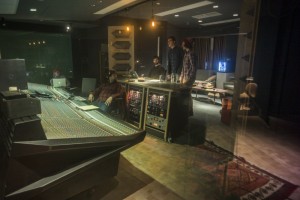
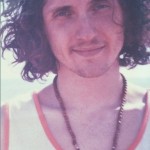
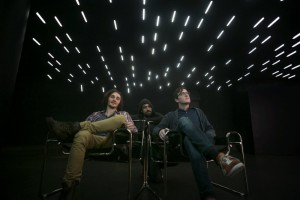
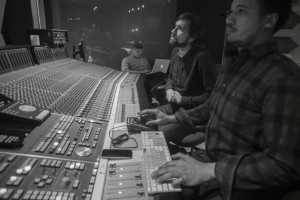
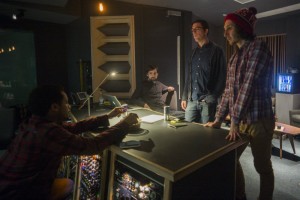
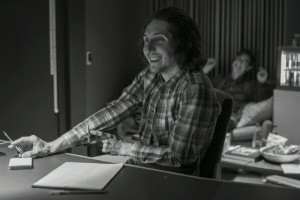
CPS3
July 23, 2014 at 10:43 am (10 years ago)Places like this are only hurting the business and studios that don’t have a multi-billion dollar budget.